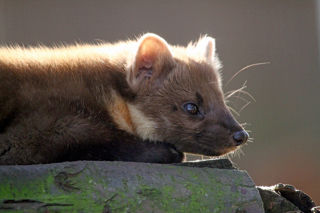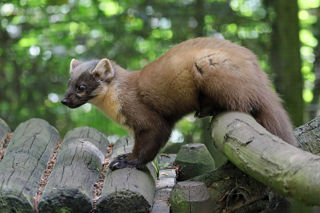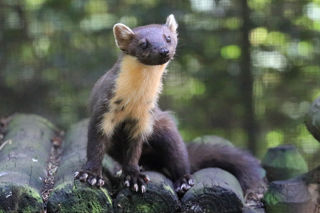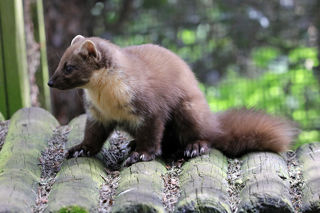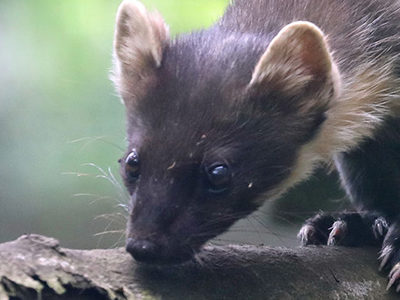
Conservation spotlight - Pine Marten
9th Dec 2020
Species: Pine marten
Looks
Weighs around 1.5-1.7 kg. Long body with a dark brown fur and with a cream-orange coloured bib. Long and fluffy tail and long, semi-retractable claws making them perfectly adapted to climbing.
The pine marten is part of the ‘mustelid’ family, which includes animals like the badger and otter.
Habitat (living spaces)
Lives in woodland, both with coniferous and deciduous trees. Deciduous woodlands with incomplete canopies and dense undergrowth seem to be their preferred habitat. The pine marten will live on a range of foods, from rodents, birds, eggs and carrion, to occasionally berries and fruits.
Status in the UK
Historically, the pine marten had a wide UK distribution and it was the second most common carnivore during the Stone Age. Today it lives mostly in Scotland, with a few rare animals found in England and Wales.
Historical persecution for fur, sport and because it was considered a nuisance predator meant there was a major decline in pine martens from the 1700s onwards. Today habitat loss and fragmentation due to road works and urbanisation makes it difficult for the species to bounce back.
The pine marten is protected under Schedule 5 of the Wildlife and Countryside Act 1981.
Importance for nature
The pine marten plays an important role in the food chain where it helps regulate the numbers of the species it preys upon and in so doing contributes to a healthy ecosystem with a balanced biodiversity.
Recent research has suggested that pine martens can play a part in reducing the numbers of the invasive grey squirrel, giving our native and endangered red squirrel a chance to recover.
Wildwood’s work
Pine martens are historically difficult to breed in captivity, but Wildwood has done so successfully over many years. Our plan is to use our expertise to build upon this success and increase our captive breeding capacity.
We are keen to develop a better understanding about the role of captive bred pine martens for reintroduction and we are closely following the trial project in Gwynedd. Members of the conservation team have also assisted with monitoring the recently released pine martens in the Forest of Dean. Our captive pine martens have enabled many research projects over the years including trialing hair tubes and den boxes which have helped inform conservation projects.

